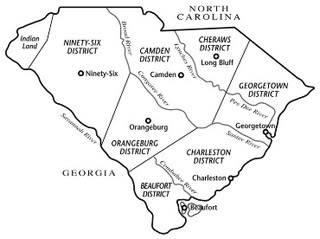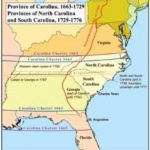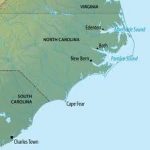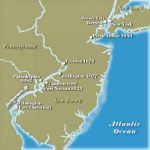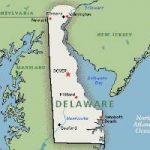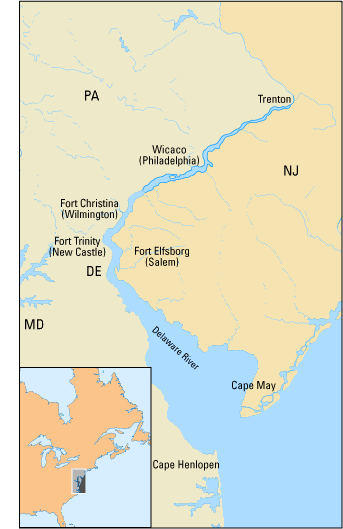The Year:1670
Districts of South Carolina Colony
The first English settlement was made in 1670, when William Sayle sailed up the Ashley River with three shiploads of English emigrants from the Barbados. They pitched their tents on river banks and built a town, which has since wholly disappeared. In 1671, Sir John Yeamans joined the colony, bringing with him about two hundred African slaves, and before the year was over, two ships bearing Dutch emigrants arrived from New York. In 1680, the colonists sought a more favorable site for their town, and chose a point between the Cooper and Ashley Rivers, and there they founded Charleston.
Government
Scarcely had the first immigrants landed when a popular assembly began to frame laws. William Sayle was their first governor, but he soon died and was succeeded by Sir John Yeamans, who ruled for four years, when he was dismissed for having enriched himself at the expense of the people. Yeamans was followed by John West, an able and honorable man, who held the office for nine years.
The Huguenots
The close of the century was marked by the coming of the Huguenots to South Carolina. The Huguenots were not only forbidden to worship God in their own way, but also forbidden to leave France on pain of death. Many, however, probably half a million, escaped from the land of their cruel king and settled in various parts of the world. They were a noble and intelligent people, who “had the virtues of the English Puritans without their bigotry,” and their coming to America infused into colonial life another element of stanchness of character that was felt all through colonial days.
These people were at first coldly received on the shores of South Carolina, but in time they came to be regarded as a substantial portion of the population. It was Governor Blake that first recognized the worth of the Huguenot immigrants, and he secured for them full political rights.
Governor Blake died in 1700, and South Carolina entered upon a long period of turbulence and strife. Sir Nathaniel Johnson became governor in 1703, and the trouble began. His first act was to have a law passed excluding all Dissenters – who composed two-thirds of the population – from the assembly.
The people discovered the trick, and the next assembly voted by a large majority to repeal the law. But Governor Johnson refused to sign their act. The assembly then appealed to the proprietors, but they sided with the governor. The people then appealed to the House of Lords and won their case. But the Church of England was made the state church and so it continued until the Revolution, ant the colony was divided into parishes.
Native Americans
The most distressing calamity that befell South Carolina in its early days was the Indian War of 1715. The Yamassee tribe, who had aided the whites against the Tuscaroras in North Carolina, joined with other tribes and turned against the Yamassee, and a disastrous war followed.
The war began in the usual way: the Indians fell upon the unsuspecting farmers with relentless fury, and nearly a hundred perished the first day. But the settlers were quick to fly to arms. The war lasted ten months. Four hundred whites perished, but the Indians were utterly defeated and the survivors driven from their homes into Florida.
The cost of the war had been so great that the people called upon the lords proprietor, who had derived a large income from the colony in quitrents, to aid in bearing the expenses. But the proprietors refused to permit the assembly to raise money by import duties, or by selling vacated Yamassee lands.
They also denied the rural freemen the right to vote in their own districts, requiring them to go to Charleston to vote. The people rose in rebellion, and appealed to the king to make South Carolina a royal province. Their request was granted, and in 1719 South Carolina became a royal colony;
In 1715, some five hundred Irish came and occupied lands vacated by the Yamassee near Port Royal. But the back country was held by the Cherokees until 1755, when they made a treaty ceding that territory to the Crown.
A Royal Province
From the time that South Carolina became a royal province, its growth was rapid and substantial, and so it continued through the remaining half century of the colonial era. In 1740, the colony suffered from a slave insurrection led by one Cato, but it was soon put down. The city of Charleston was burned this same year; but a new city, far more beautiful, rose from the ashes of the old. Charleston was one of the most delightful of cities, even in the earlier times,
Rice
The earliest important product of South Carolina was rice, though it required a hundred years to determine the best kind of soil and labor, and to invent the machinery for harvesting, threshing, and husking. Wild rice was native in the South, but it was inferior to the cultivated rice introduced from Madagascar about 1693. Not many years passed till the Carolinas rivaled Egypt and Lombardy in furnishing rice for Southern Europe.
Rice grows best in marshy ground and swamps, and its cultivation is peculiarly destructive to human life. The same is in a great measure true of indigo. These factors had much to do in shaping the economic and social condition of South Carolina, making it the chief slaveholding community in America. Many other products, like grain, furs, cattle, and the products of the forest, were exported from South Carolina, but not until a later generation did cotton become king.
Slavery
Almost from the beginning, the slaves in South Carolina outnumbered the whites. Slavery became the cornerstone in the political system, and so it continued until the Civil War. The people of South Carolina clung to the seaboard even longer than did those of their sister colony to the north.
Slaves comprised 80% of the population of the lowcountry. The vast majority were field hands on rice and indigo plantations, but some were house servants. Others were skilled craftsmen: carpenters, cabinetmakers, bricklayers, etc. whose skills were highly valued in Charleston and on the plantations. The population in 1760 was estimated at150,000, three-fourths of whom were slaves.
Charleston
The character of society in the two Carolinas, except in the back counties, differed widely, mainly because North Carolina had no important seaport, and therefore little direct communication with Europe or New England. Charleston, on the other hand, carried on a brisk foreign trade. Here came ships from many lands, bringing the luxuries of civilized life. Conditions in Charleston fostered the growth of aristocracy, and in culture and refinement came to rival Philadelphia and Boston.
Charleston, the capital city of colonial South Carolina, was the only major seaport in the Southern Colonies. The city’s merchants developed regular trade patterns with the West Indies, northern American colonies, Portugal, and England. Charleston developed into one of the major port cities of the British Empire, and on the eve of the American Revolution was one of five colonial American cities
The Low Country
The South Carolina lowcountry was the richest society in North America. On the eve of the American Revolution, of the ten wealthiest men in America, nine lived in the South Carolina lowcountry. By the end of the colonial period, the lowcountry elite had become interrelated through marriage and business partnerships.
SOURCES
South Carolina
Province of South Carolina
